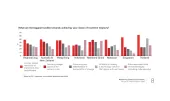The synergy between trade finance and trade credit insurance
By Tony GeorgeAs I scanned my Insurance Day newsletter in London the day I wrote this article, three articles caught my eye “Market Update: trade credit claims rise in 2012 following 30% jump in 2011;” “Trade credit: uncollectable debts rising in North America;” and, then, “Credit insurers call for banks to ‘behave as they should to end financing gridlock [the International Credit Insurance & Surety Association] points at banking sector’s failure to extend credit as major obstacle to economic growth.” Despite the incongruity these headlines demonstrate the synergy between trade finance and trade credit insurance (TCI).
TCI may be broadly defined as the insurance against ‘counterparty risk’: the risk of financial loss caused by the failure for commercial reasons of a cross-border trade partner to honour its contractual obligations, be they payment for (‘can’t pay/won’t pay’), or the supply of, goods or services.
Provided specified parameters are met, such as ‘national benefit’ or overseas development, for some time this type of insurance had been provided by countries’ export credit agencies and multilaterals such as MIGA. Certain insurance companies had also specialised in writing it, but the private sector was given impetus in the mid-nineties when conquering Lloyd’s fear of credit insurance generally following disastrous experience in the 1920s, Lloyd’s regulations were changed and Lloyd’s syndicates were again allowed to underwrite credit risks, albeit only in an overseas trade context.
The private political risk insurance market in London – whose CF, ‘Contract Frustration’ policies were beginning to overlap with trade credit insurance – were quick to take up this new class of business and to provide TCI to corporates engaged in international trade such as commodity traders, as well as exporters (and indeed importers with pre-payment or pre-export risks, such as the cost of aborted manufacturing and supply) perhaps involving their financiers as ‘loss payee’: the nominee for receipt of claims payments.
These days, however, banks and other financial institutions have taken over as primary insureds. They account for the largest sector of the TCI market with coverage being provided to them against default on their loans and securities as well as protection for their own financial instruments .
This is partly because wordings have been so-crafted that they are sufficiently ‘unconditional’ to meet the requirements of the Basel II Accord to qualify as ‘credit risk mitigation’ (CRM) instruments acceptable to banks’ supervisory authorities in order to reduce their capital requirements.
The wordings now avoid any provision which is outside the control of the insured bank and which could entitle insurers to refuse to pay a claim in a timely manner in the event of counterparty default. Basel III, if and when it is adopted around the World, may inhibit financial institutions’ involvement in trade finance, but TCI is likely to remain an acceptable CRM.
The popularity of TCI with financial institutions has come at a cost to the Insurance Market. Following the collapse of Lehmann Brothers in 2008 and the resulting global recession, the Market has paid out an estimated US$2.5 billion in claims. Some of that will be recovered by way of subrogation, but still a substantial ‘hit’.
Nevertheless, the Trade Credit Insurance Market remains relatively undaunted. There has been a slight reduction from 2011 to 2012, but over the last 10 years its capacity has increased fourfold. According to brokers’ figures, by the start of 2012 trade credit insurance had a theoretical capacity of nearly US$1 billion with tenors ranging from 1 year to (exceptionally) 15 years.
This is not to say that TCI does not generate problem claims: claims that require investigation and which are sometimes turned down requiring litigation to resolve. My next contribution will deal with the problems that most frequently arise in this class of insurance business.



















 Advertise
Advertise








